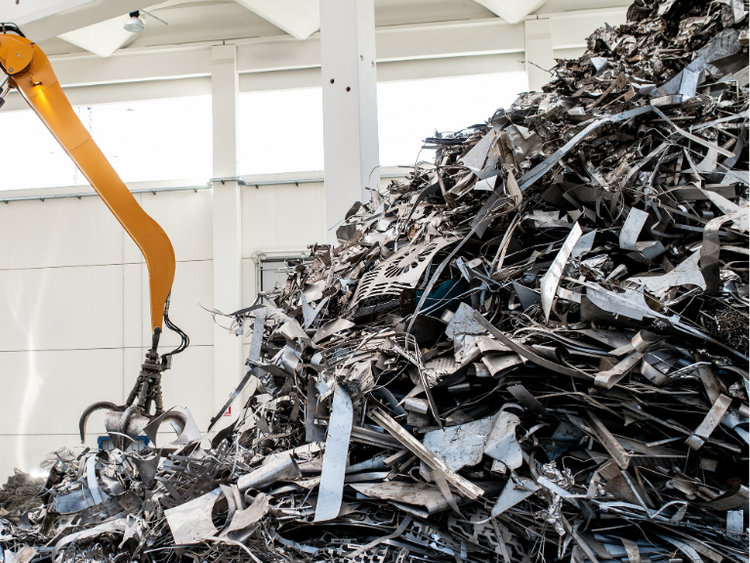Analysis

October 5, 2021
Final Thoughts
Written by Michael Cowden
Sheet prices are mixed this week. Hot rolled is up $10 per ton, cold rolled is down $30 per ton, and galvanized base prices are unchanged.
What do you make of a week like this when there is no clear trend?
![]() First, I would caution against reading too much into any one week – especially when it comes to prices being up a little – because I don’t think the fundamentals support a significant rebound in prices.
First, I would caution against reading too much into any one week – especially when it comes to prices being up a little – because I don’t think the fundamentals support a significant rebound in prices.
You know the usual suspects: lead times are down, import competition is up (a lot), and buyers aren’t scrambling to get steel anymore.
Yes, oil prices are up. And that should in theory help the OCTG market. But OCTG imports are also up – which means any upside in energy might be limited.
This has led to a somewhat odd phenomenon for us. We had readers complaining last week that we had dropped prices too far, too fast. This week, some of those same readers are saying that they don’t understand how our prices can possibly be so high.
One example: I’ve been told that sheeted and delivered material is available for as little as ~$1,800 per ton ($90 per cwt) in the Gulf Coast area. SMU’s U.S. HRC price is at $1,930 per ton ($96.50 per cwt) as of today. How can companies sell a value-added product for less than the replacement cost for the coil it is made from?
In a word, imports. They are a much bigger part of the mix than they used to be. Flat rolled imports have been one million short tons or more every month since May, according to Commerce Department figures. That’s well over the monthly average of approximately 775,000 tons over the last two years. Or, put another way, a sheet mill with annual capacity of three million tons per year has monthly capacity of approximately 250,000 tons. So we’ve been adding an extra mill a month for a while now.
And some companies are blending US prices and import prices to come up with their selling price for downstream goods.
Recall that U.S. HRC prices are a lot higher than those in the rest of the world. U.S. prices are theoretically ~$850 per ton more than Asian HRC prices. And that premium is approximately $400-500 per ton compared to EU prices. And that means imports are probably going to come in at higher volumes than usual for a while.
Sure, lead times from Southeast Asia might be as long as six months. If you order steel from Vietnam now, it might not show up until March or April – and so you pay less to offset the increased risk of such a long lead time. And who knows what the market might look like next spring? But lead times from Europe are not nearly as long. And those from Canada and Mexico are roughly on par with those of domestic mills. In other words, steel is probably available for significantly less than domestic prices, in comparable quality to that of U.S. mills, and at lead times that don’t present much risk.
So, given all that, how is it that SMU’s hot rolled coil price is a little higher this week than last. Well, as best as we can tell, there haven’t been any big deals at $1,900 per ton or less for domestic hot rolled. Are there whispers of potential big deals to tubers or master distributors at those levels? Yes. Have we been able to confirm them? No. Might we in future weeks? Yes. But this week was not one of them.
In my experience, though, today’s outlier or whispered price is often next month’s or even next week’s actual price. And I think that’s just as true when prices are on the way down as it is when they are on the way up.
And I do think those lower-priced deals are coming. Because while fob mill prices might not be coming down, I’m hearing more and more about prices for excess prime and secondary material dropping. Those deals won’t get reported to the various indices because they don’t meet their specifications.
The thing is, those kind of games have a shelf life. You can protect the fob mill price reported to industry indices for only so long. At the end of the day, there is still more volume coming into the market at lower prices – whether it be imports or excess prime. And that will eventually result in fob mill prices adjusting downward.
Also, take min-max contracts. Some buyers just a few months ago couldn’t get more than their minimum tonnage from mills. They were effectively on allocation. Now some of those same buyers no longer want even that minimum tonnage – and some are going so far as to cancel orders.
This is probably not an opportune time for that to be happening. Mills are in the middle of contract negotiations with automotive companies and other big end users. They need to look strong. A CRU minus 1% contract might have looked good in July to end users. Perhaps not so much now.
And it’s not just price that is being negotiated. Producers not only want to keep spot prices as high as they can, they also want to get rid of discounts on freight and extras that might have been negotiated when the market was weak last year. Also, steel buyers don’t want to see their inventories devalued. And so it’s really not in anyone’s interest to report lower numbers right now.
So you’ll see a lot of smaller fob mill deals, 200 tons or so, being reported at higher numbers to industry publications. And not much in the way of the 3,000-10,000 ton deals that would usually fetch a significant discount. Those deals will no doubt come. And the market will eventually adjust lower, perhaps in a big way. But exactly when, as always, is hard to say.
By Michael Cowden, Michael@SteelMarketUpdate.com







